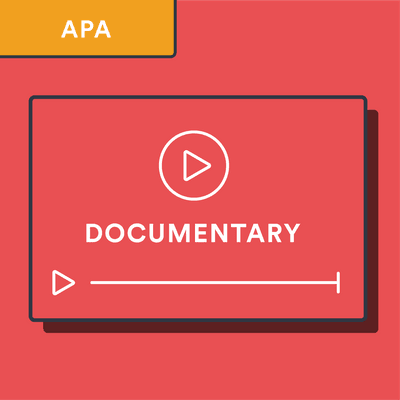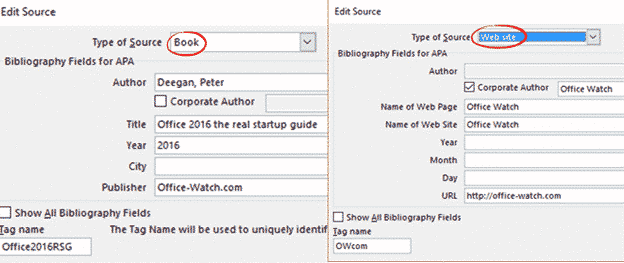MLA Style:
Citing websites and web pages
(based on the 7th edition of the MLA Handbook)
- Add A Medium In Citation On Word
- Add A Medium In Citation On Word Document
- Add A Medium In Citation On Word File
When creating citations for websites and web pages use 'Web' as the publication medium. Date of access is the date you found and used the material. You should always be able to include this in a citation! Remember, when creating a citation dates are written in a particular order - day, month, year. Example - 17 Nov. In-text citations for print sources with known author. For print sources like books, magazines, scholarly journal articles, and newspapers, provide a signal word or phrase (usually the author’s last name) and a page number. If you provide the signal word/phrase in the sentence, you do not need to include it in the parenthetical citation. Your Medium profile page is the place where people can find all your published stories, and where they can follow you to receive all your new stories right on their homepage. Sections in this article. Viewing your profile page; Editing your profile name, picture, and bio; Customizing your profile page. Changing your background and accent colors.
Citing websites and web pages can be tricky. Not all websites and web pages have all components. Here are the parts you should list if you can find them. Citation examples are at the bottom of the page.
Author, editor, or compiler
Not all web pages and websites list the names of individual (personal) authors, editors, or compilers. Begin the citation with the title if there are no authors.
When creating a citation, list authors last name first. Example:
| Didd, Katy. |
'Title of Document'
This is usually at the top of the page, and also may be at the very top of your browser. The document title only refers to one part or page of a website - for example the 'Johnny Depp' entry on the Internet Movie Database website, or the 'H1N1 Flu' page on the CDC's website.
When creating a citation put the title in ' ' (quotation marks).
Title of Website
Like the document title, this is usually at the top of the page, and also may be at the very top of your browser. Websites are a collection of individual pages - for example, the Internet Movie Database, the Occupational Outlook Handbook, The Daily Show, or Wikipedia are all websites, not pages.
If you are using an individual web page and want to know the name of the website where it resides, use the home button to get back to the main page for the entire website. If there is no 'home' button, delete everything in the URL after the domain name and get to 'home' that way. http://www.imdb.comis an example of a shortened or 'home' URL.
When creating a citation put the website title in italics.
Institution or organization associated with the site
You want to discover the university, government agency, business, etc. that is responsible for or is publishing the site. You can often find this in the copyright statement.
When creating a citation use n.p. for 'no publisher' if you are unable to find this information.
Date of electronic publication or last update
This information is usually found at the bottom of the page. If there is a copyright date, it is often in the copyright statement or near it.
When creating a citation note day, month, year - in that order. Example - 15 Dec. 2008. Use n.d. for 'no date' if no date of publication copyright date, or date of update is given. Abbreviate long months, such as January (Jan.) or December (Dec.).
OR
Medium of publication
MLA lists electronic sources, such as web pages, as 'web publications.'
When creating citations for websites and web pages use 'Web' as the publication medium.
Date of access
Date of access is the date you found and used the material. You should always be able to include this in a citation!
Remember, when creating a citation dates are written in a particular order - day, month, year. Example - 17 Nov. 2009
Web address or <URL>
MLA no longer requires web addresses in citations, but suggests that you include them anyway as your professors may still require them. Put angle signs (carets) around the web address.
<http://www.imdb.com/>

Citation examples

These examples show the correct order of citation elements and the correct punctuation to use. Notice that MLA citations also require indentation.
website
The Internet Movie Database. IMDb.com, Inc, 2009. Web.
29 Oct. 2009. <http://www.imdb.com/>.
web page
'Johnny Depp.' The Internet Movie Database. IMDb.com, Inc, n.d. Web.
29 Oct. 2009. <http://www.imdb.com/>.
Microsoft Word is one of the most widely used document editors in the world. Many scientific-based academic reports; essays, coursework, final year projects, thesis, dissertations, journals etc. use the Institute of Electrical and Electronics Engineers (IEEE) referencing format. This can be really frustrating especially if you want to input a new in-text reference between two or more already existing in-text references. Doing it manually is a pure waste of time especially when the number of references is so verbose. Here is where the Microsoft Word in-built referencing system can help. The following sections explain how to use Microsoft Word to manage IEEE references.
Add A New Source
Step 1: Go to the References tab
Step 2: Select the type of referencing from the list provided by clicking on the drop-down list of the Styles in Citations & Bibliography category. In this example, the IEEE referencing is selected as seen below.
Step 3: While writing the content of your report and you want to include an in-text reference in a specific location, place the mouse in that location, then go to Insert Citation in the Citations & Bibliography section as seen below. If you want to add new reference information, then click on the Add New Source from the dropdown list.

Step 4: The pop-up window will appear for you to create a new source. It allows the user to select the Type of Source, after selecting this, the required fields for the selected source type will be displayed. For example, the required field for a Journal Article is provided below.
Step 5: However, if you want to add additional information about the source then you can click on the checkbox “Show All Bibliography Fields” as seen below.
Add A Medium In Citation On Word
Step 6: To add the author information click on the edit button and insert one after the other the author information as seen below:
Step 7: Once the reference is successfully added the reference number will appear on the body of the report as seen below:
Viewing the List of Sources Already Added
Add A Medium In Citation On Word Document
The added references in the list can be viewed by going to the References tab and then selecting Insert Citation from the Citation & Bibliography category as seen below:
Add A Medium In Citation On Word File
Referencing A Source That Was Already Inserted
If the source is already added to the document, you don’t need to add it again. All you need to do is to click on the location where you want to insert the reference again and select it from the list as shown below:
Generating Bibliography or Reference List
Lastly, you can generate your bibliography or reference by clicking on Bibliography from the Citations & Bibliography category from the References tab as seen below:
Updating the In-Text Citations and References List
If you want to add a new in-text reference between two or more already existing in-text references and then update the reference list, no manual changes are needed. All you need to do is to insert the in-text reference in the specific section as discussed above. Select the entire document (CTRL+A), then Right-Click and select the Update Field from the popup list. The in-text reference numbering and the reference or bibliography list will be updated accordingly.
Final Notes
That’s it, I hope you got everything, if you did not, send your comments and questions.
See also: